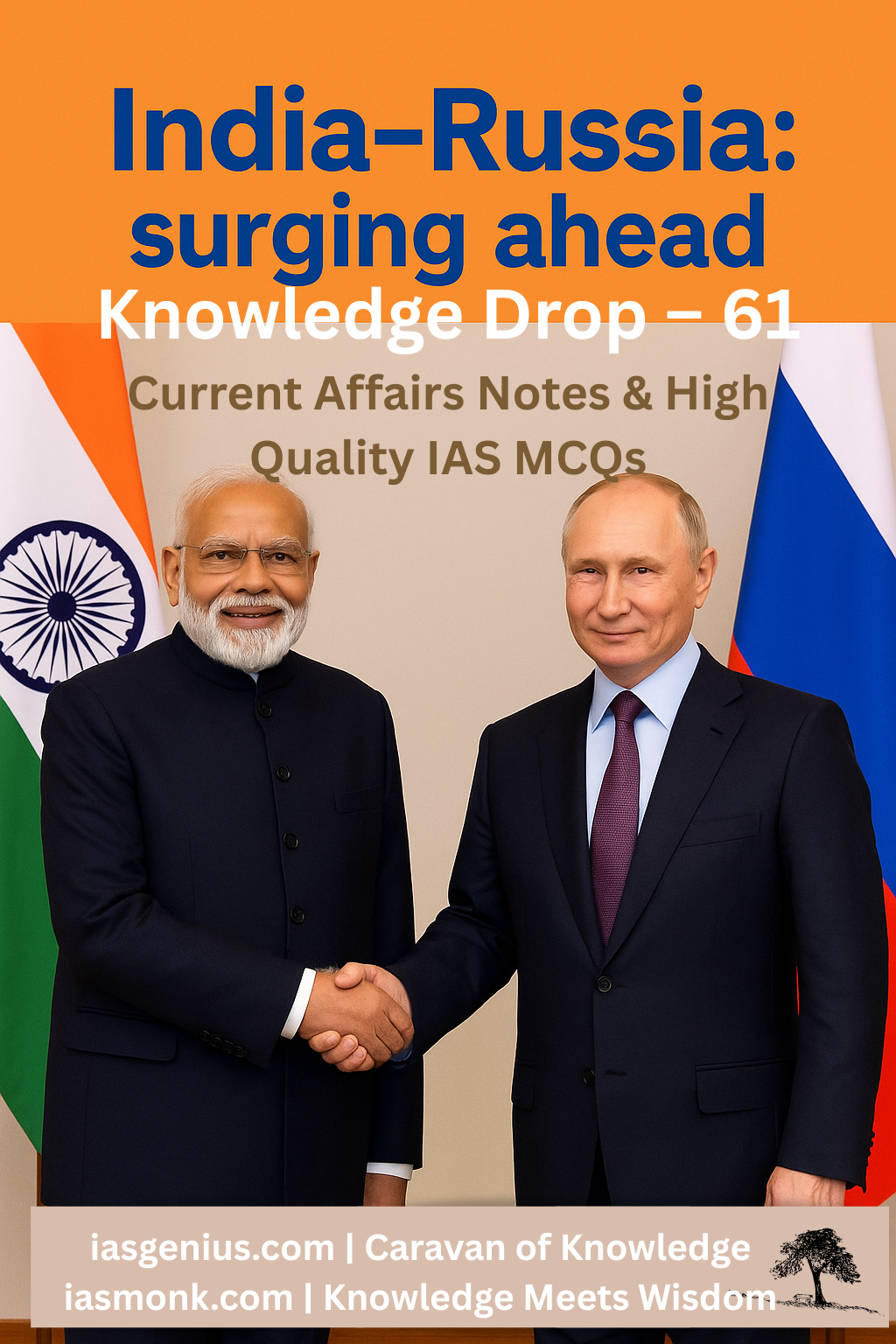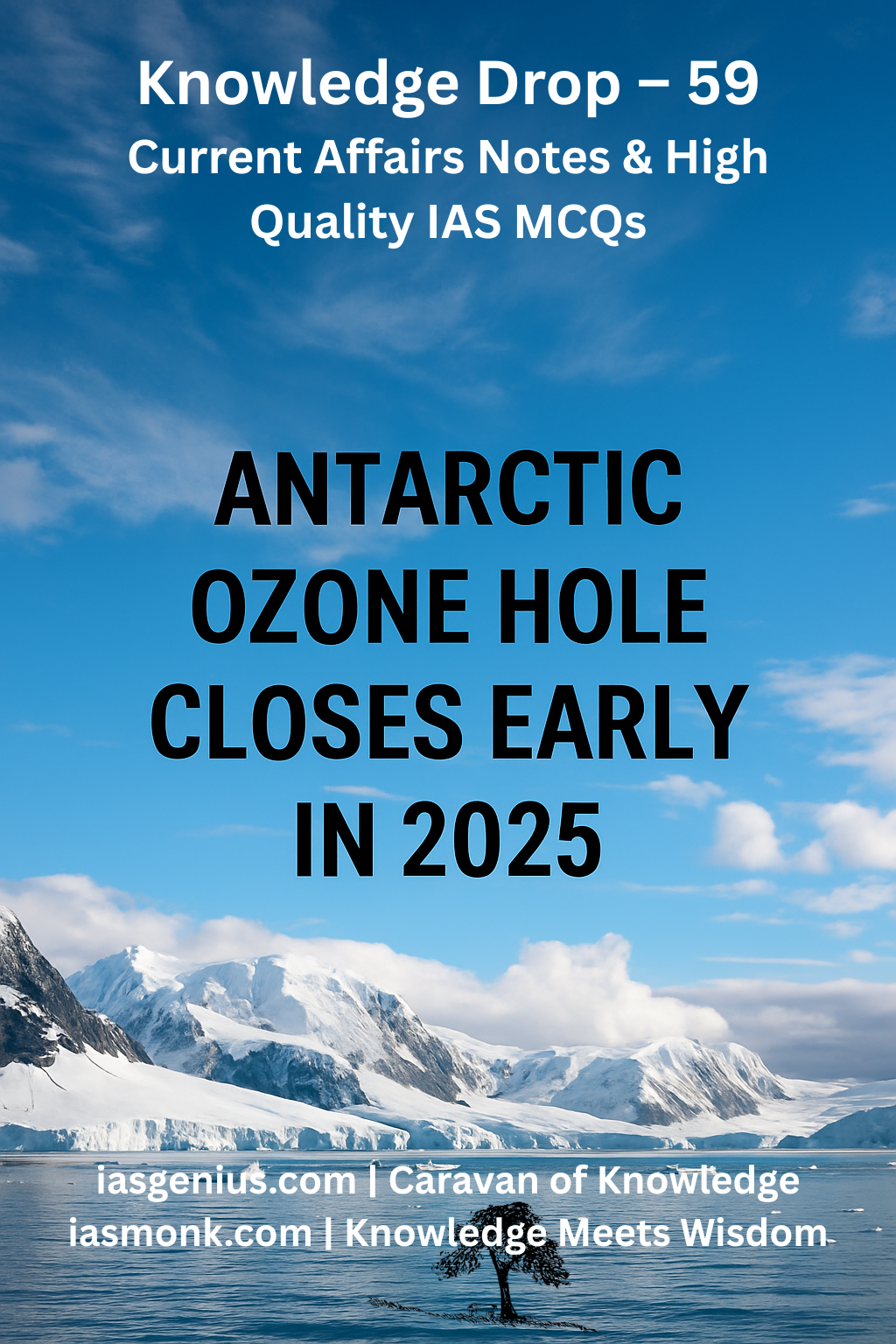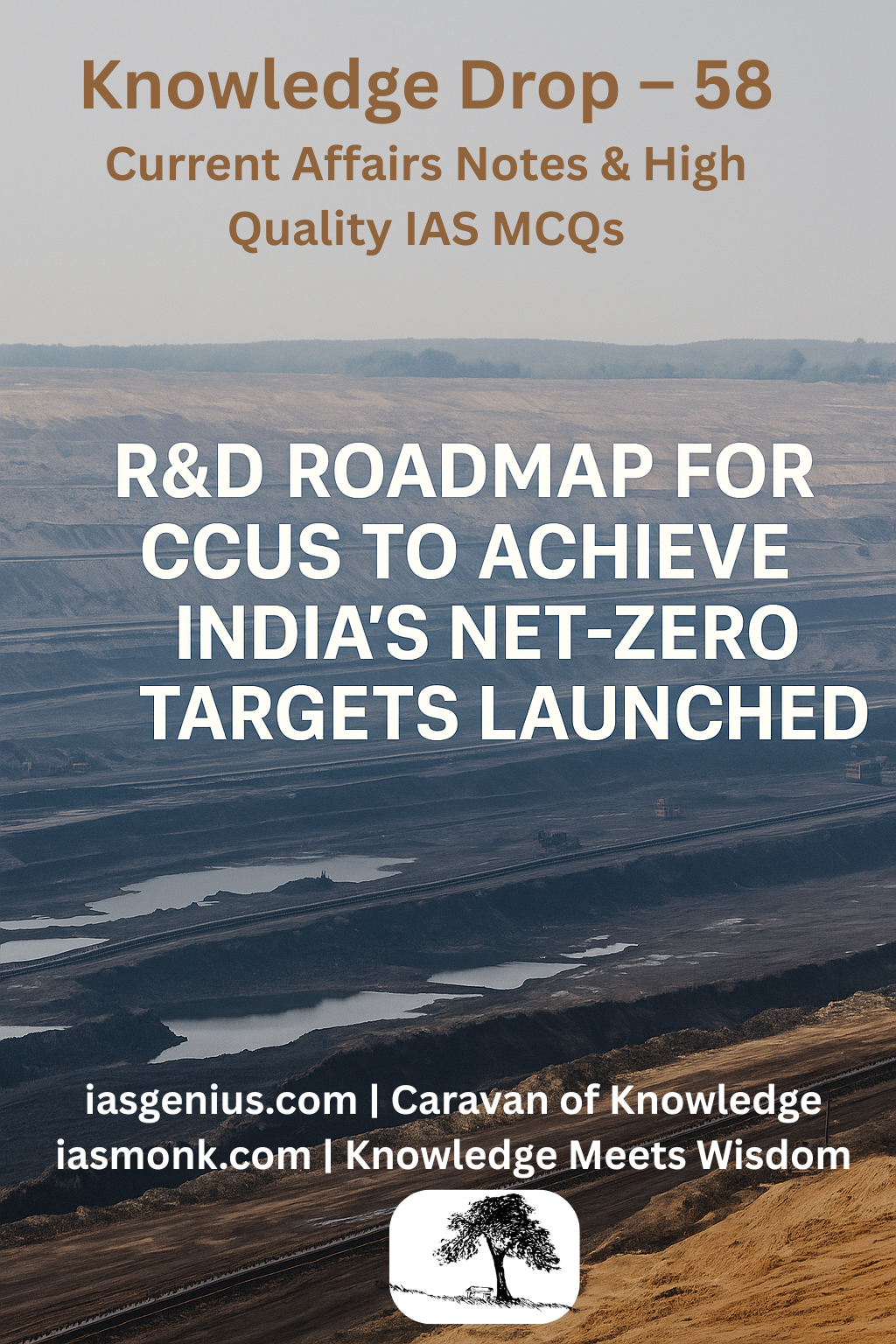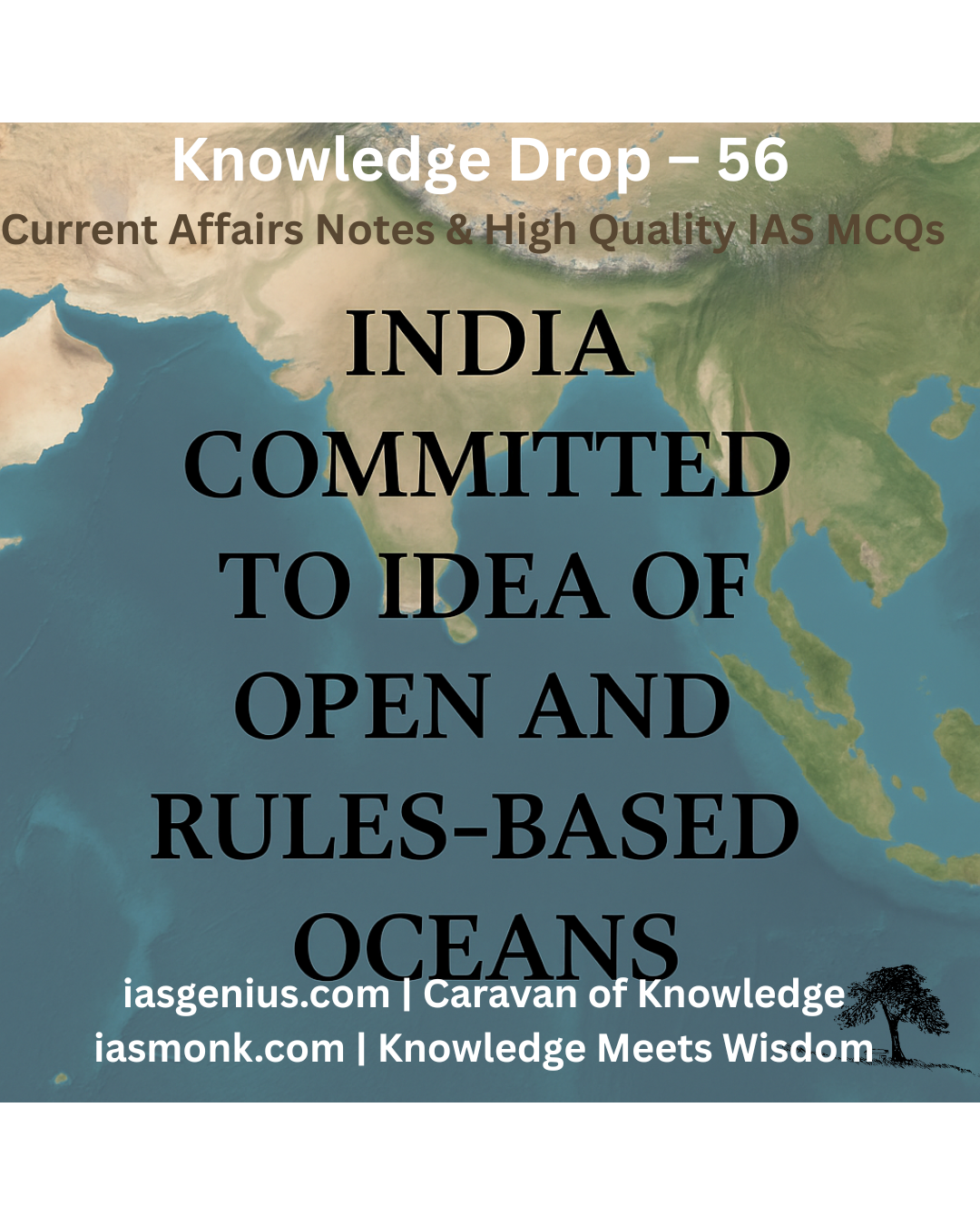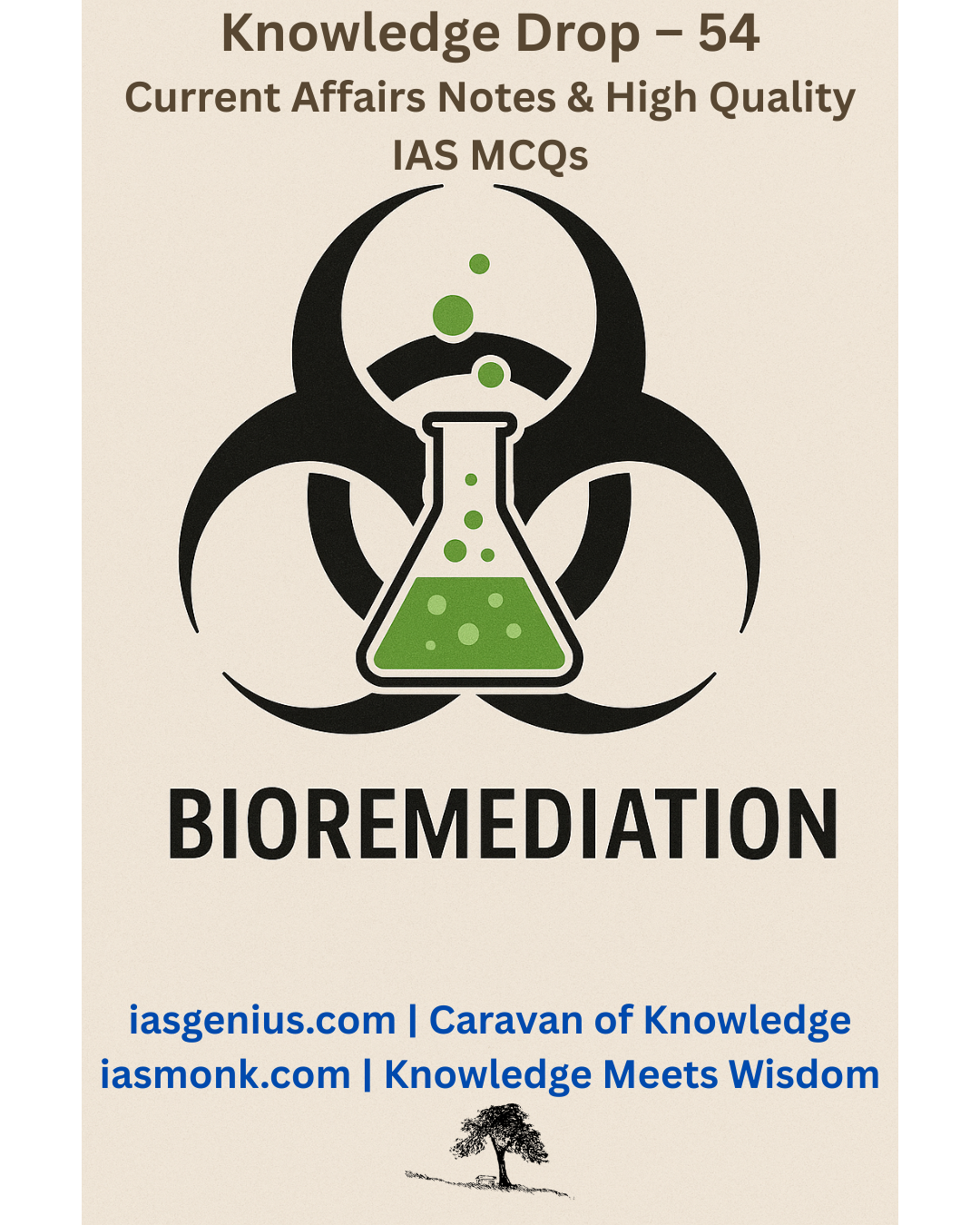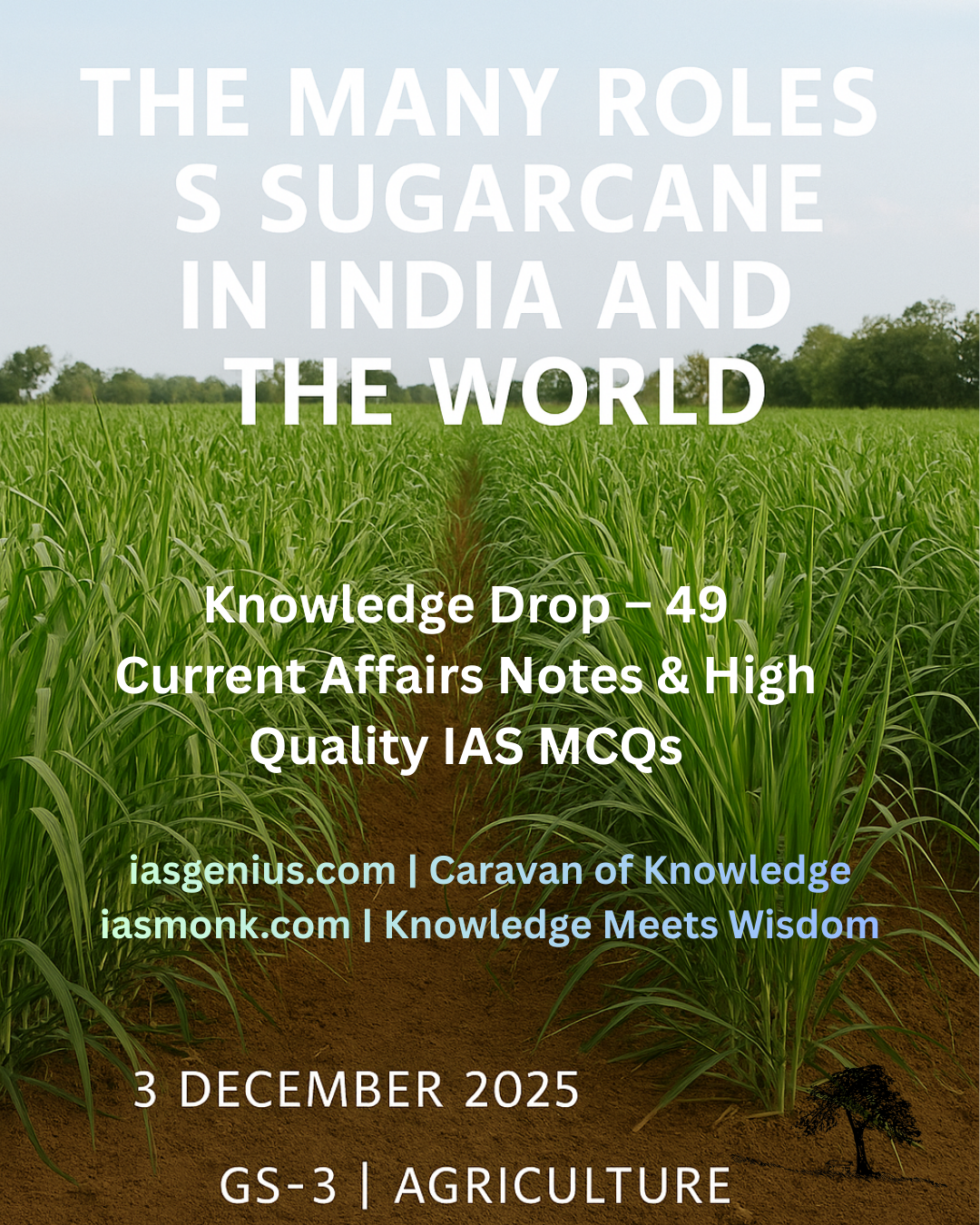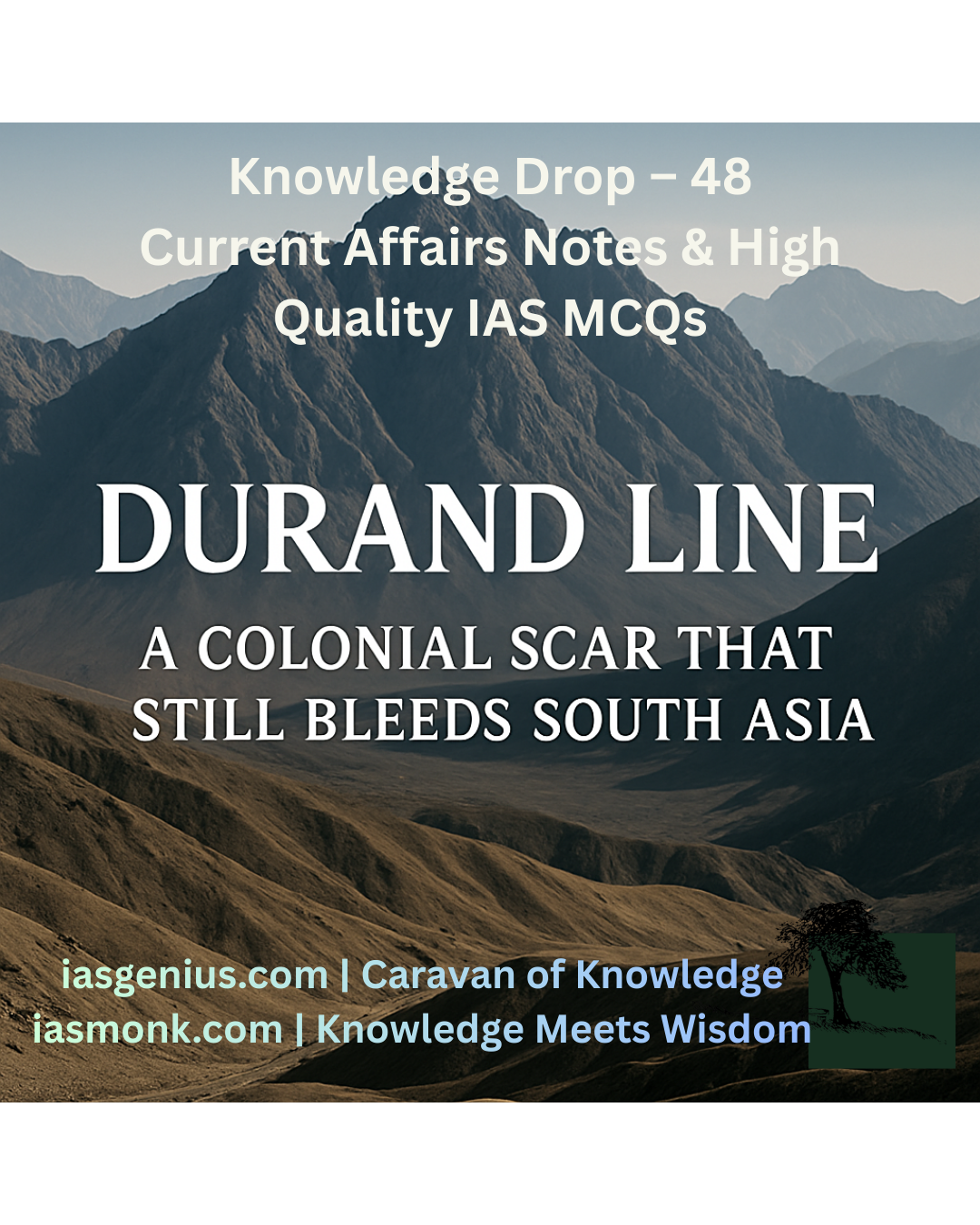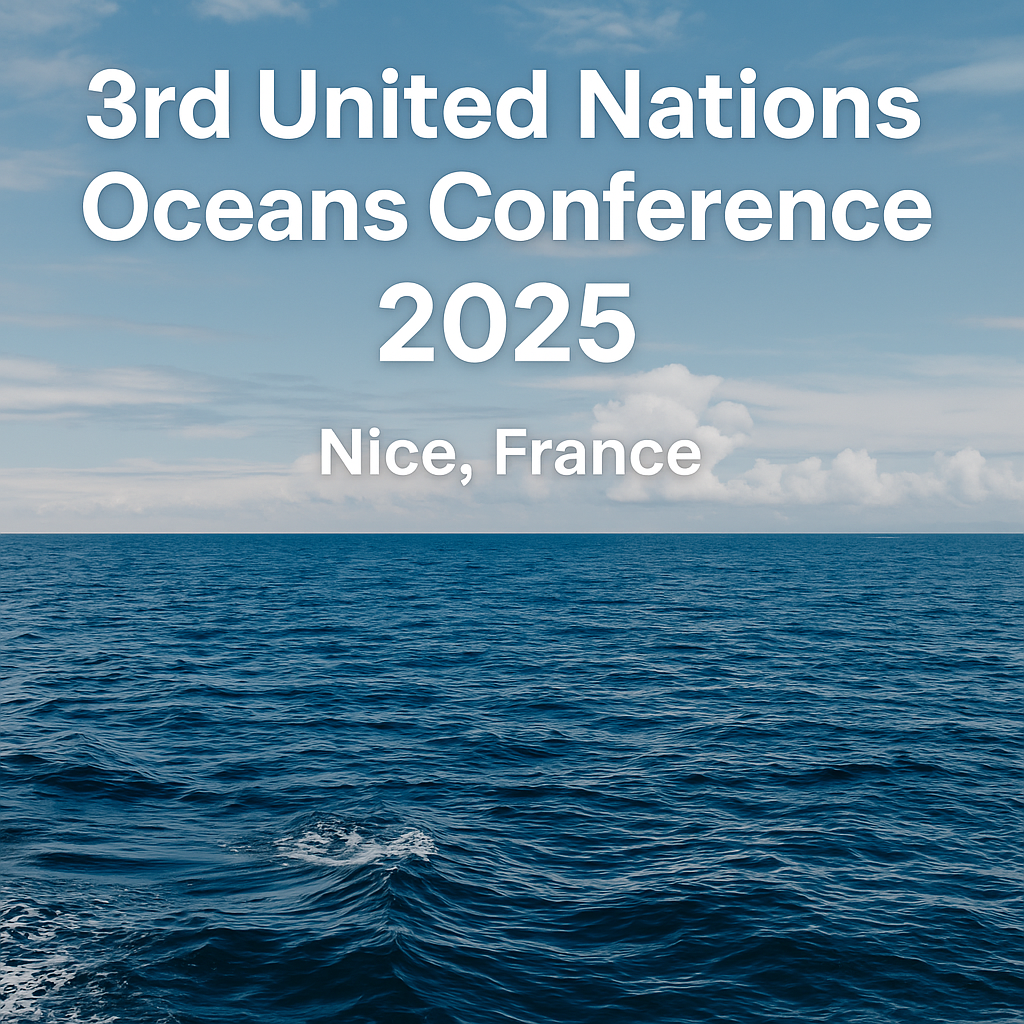
🧭June 20, 2025 Post 3: 🌊 Guardians of the Deep Blue-Ocean Conference 2025 | High Quality Mains Essay: The Third United Nations Oceans Conference (UNOC-2025): Humanity’s Last Chance to Save the Blue Planet | For IAS-2026 :Prelims MCQs
🌊 Guardians of the Deep Blue

INTERNATIONAL
🗓️ Post Date : June 20, 2025
Thematic Focus: Ocean Conservation | Global Cooperation | SDG 14
Syllabus Mapping: GS3 – Environment | International Agreements
🌀 Intro Whisper
In the gentle tides of Nice, France, the world gathered not for war or wealth — but to protect the infinite rhythm of the ocean.
🔍 Key Highlights
- The Third United Nations Oceans Conference (UNOC) concluded with powerful political and financial commitments.
- 56 of 60 countries have ratified the High Seas Treaty (BBNJ Agreement); enforcement is imminent.
- India pledged to ratify the treaty and unveiled a 10-point roadmap for sustainable ocean governance.
- The European Union pledged €1 billion, and French Polynesia announced the world’s largest marine protected area.
- Global consensus grew around pausing deep-sea mining amid ecological concerns.
📘 Concept Explainer
🌐 What is the High Seas Treaty?
- Formally known as the Biodiversity Beyond National Jurisdiction (BBNJ) Agreement.
- Aims to regulate activities beyond 200 nautical miles from any nation’s coast — the high seas.
- Mandates environmental impact assessments, creation of marine protected areas, and equitable benefit sharing of marine genetic resources.
🧭 India’s 10-Point Roadmap:
- Expand Marine Protected Areas
- Scale up the Blue Economy
- Reduce Marine Pollution
- Promote Offshore Renewable Energy
- Support Global Plastics Treaty
- Invest in Ocean Science
- Strengthen Coastal Resilience
- Ensure Equitable Access
- Pause Deep-Sea Mining
- Foster Global Partnerships
🗺️ GS Paper Mapping
| Area | Details |
|---|---|
| GS3 – Environment | Ocean governance, marine conservation, climate mitigation |
| GS2 – International Relations | UNOC, India’s global environmental diplomacy |
| SDGs | SDG 14 (Life Below Water), SDG 13 (Climate Action) |
🌠 A Thought Spark — by IAS Monk
“The ocean does not speak, but it remembers.
In its silence, it holds the sins of our plastic and the prayers of our planet.
The tides are rising — not just in sea level, but in accountability.”
High Quality Mains Essay For Practice :
Word Limit 1000-1200
The Third United Nations Oceans Conference (UNOC-2025): Humanity’s Last Chance to Save the Blue Planet
In the beautiful coastal city of Nice, France, the third United Nations Oceans Conference (UNOC-2025) unfolded as a global clarion call—an urgent appeal to heal the most vital yet most endangered expanse of our Earth: the oceans. As melting glaciers, collapsing fish populations, and swirling plastic vortexes paint an ominous portrait of our blue planet’s future, this summit carried the sobering weight of planetary destiny. With over 170 nations, thousands of activists, scientists, and policymakers gathered under one roof, the UNOC-2025 was not merely a diplomatic gathering—it was a turning point.
From the icy reaches of the Arctic to the sunlit shallows of coral reefs, the world’s oceans are in turmoil. What was once a boundless cradle of life has become a sink for pollution, warming, and exploitation. The theme of this year’s conference—*“Accelerating Action and Mobilizing All Actors to Conserve and Sustainably Use the Ocean”—*spoke of urgency, collaboration, and survival.
A Tide of Commitments: Key Highlights from UNOC-2025
The summit’s standout moment was the nearing enforcement of the High Seas Treaty—officially titled the Biodiversity Beyond National Jurisdiction (BBNJ) Agreement. With 56 of the required 60 countries having ratified it, the Treaty represents humanity’s best legal shot at protecting the two-thirds of the ocean that lies beyond national jurisdictions. These vast waters—long exploited for their mystery and lawlessness—may now be home to enforceable Marine Protected Areas (MPAs), strict environmental impact assessments, and regulated access to marine genetic resources.
Another significant outcome was the Nice Ocean Action Plan, endorsed by over 170 nations. This comprehensive political declaration was supported by more than 800 voluntary commitments—from empowering youth to preserving deep-sea ecosystems, to building marine science capacity in small island states. The momentum was unmistakable: the ocean is no longer an afterthought; it is central to climate justice, biodiversity preservation, and economic equity.
A Wave of Resistance: The Deep-Sea Mining Debate
But the summit also bore witness to heated debates. A rising coalition of countries, led by France, Chile, and several Pacific Island nations, called for a precautionary pause on deep-sea mining. Scientists presented alarming studies suggesting that mining operations in the ocean floor—still largely unknown and unexplored—could cause irreversible damage to ecosystems that have evolved over millions of years.
With calls echoing from both science and civil society, this stance marked a crucial evolution in environmental diplomacy: that preservation must sometimes take precedence over profit, especially when dealing with planetary boundaries.
India’s Role: Vision and Responsibility
India, home to a long and diverse coastline and a vast Exclusive Economic Zone, took center stage at the summit. New Delhi pledged to ratify the High Seas Treaty soon and presented a bold 10-point roadmap for sustainable ocean governance:
- Expand Marine Protected Areas
- Scale Up the Blue Economy
- Reduce Marine Pollution
- Promote Offshore Renewable Energy
- Support the Global Plastics Treaty
- Invest in Ocean Science and Technology
- Strengthen Coastal Resilience
- Ensure Equitable Access to Marine Resources
- Pause Deep-Sea Mining
- Foster Global Partnerships
India’s leadership was widely praised, especially for advocating the Global Plastics Treaty and offering to share its blue economy expertise with developing nations. The country’s approach, blending ancient maritime wisdom with modern science, drew attention for its pragmatism and moral clarity.
The Ocean Crisis: Numbers That Should Shake the World
The conference’s gravity was underscored by the catastrophic data on ocean health. According to the UN, oceans absorb 25–30% of carbon emissions and produce half the world’s oxygen. Yet, this critical ecosystem is facing a multi-front assault:
- Ocean plastic pollution stands between 75 to 199 million metric tonnes.
- Over 8 million tonnes of plastic enter the ocean annually—set to outweigh fish by 2050 if trends continue.
- Five major garbage patches now swirl in the world’s oceans, with the Great Pacific Garbage Patch containing an estimated 1.8 trillion pieces of debris.
- The average ocean pH has dropped from 8.2 to 8.1, marking a 30% rise in acidity since the Industrial Revolution—jeopardizing shell-forming marine life.
- 92% of sampled fish species have microplastics in their organs, making their way into human diets.
The figures are grim. But equally grim is the global governance gap that allows such degradation to continue relatively unchecked.
Lessons from the Past: Waves of Conservation Efforts
Ocean conservation isn’t new. Since the 1946 formation of the International Whaling Commission, attempts to preserve marine life have taken many shapes—from banning drift nets to establishing Marine Protected Areas. However, these efforts have often been isolated, weakly enforced, or short-lived.
The 1982 UN Convention on the Law of the Sea (UNCLOS) created a legal foundation, but enforcement and reach remained limited. More recent efforts, such as the 30×30 Goal—to protect 30% of oceans by 2030—set ambitious targets, yet less than 3% of oceans were highly protected as of 2020.
UNOC-2025, therefore, is not starting from scratch—but it is perhaps the first ocean conference that aligns global politics, science, economics, and youth activism with a shared sense of urgency.
The Blue Economy: Oceans as Livelihood, Not Loot
One of the more optimistic tones at the summit came from discussions on the Blue Economy—the sustainable use of ocean resources for economic growth, improved livelihoods, and ecosystem health.
With an estimated value of $3–5 trillion annually, the ocean economy includes:
- Fisheries, which feed billions and support 10% of the world’s population.
- Tourism, a key revenue source for many coastal and island nations.
- Shipping and logistics, which power global trade.
- Emerging sectors like offshore wind, marine biotechnology, and ocean-based carbon removal.
UNOC-2025 emphasized that the Blue Economy must not mirror the Green Revolution’s pitfalls. It must be inclusive, equitable, and regenerative—not extractive.
Beyond Diplomacy: A Cultural and Moral Imperative
The conference was not just about policy—it was a reckoning with humanity’s spiritual and ethical relationship with the oceans. Indigenous leaders, especially from Polynesia and the Arctic, reminded delegates that oceans are not resources—they are ancestors, teachers, and sacred lifelines.
Such philosophies, long dismissed as sentimental, are now entering mainstream conservation science. “There is no climate justice without ocean justice,” declared a young Pacific Islander activist, drawing standing applause.
Conclusion: A Sea of Hope, A Shoreline of Responsibility
As the conference drew to a close under the Mediterranean sun, the world stood at a juncture between apathy and action. The promises made at UNOC-2025 are significant—but without rigorous follow-up, they risk becoming another layer of global greenwash.
The oceans don’t need sympathy; they need science, sacrifice, and systems change. In an age where geopolitical tensions often paralyze global consensus, the ocean offers a rare domain of unity—a shared heritage and shared future.
The real test lies ahead. Will nations return home and implement what they pledged? Will consumers shift habits, industries rethink profit models, and governments enforce accountability?
As the waves lapped the shores of Nice, the answer seemed to whisper in rhythm:
“Save the ocean, and you save yourself.”
Target IAS-26: Daily MCQs :
📌 Prelims Practice MCQs
Topic: 🌊 Guardians of the Deep Blue -Ocean Conference 2025
MCQ 1 – Type 1: How many of the above statements are correct?
Q. Consider the following statements regarding the High Seas Treaty discussed at UNOC 2025:
1. The Treaty allows for the creation of Marine Protected Areas (MPAs) beyond national jurisdictions.
2. It enables the extraction of marine genetic resources without any regulation.
3. It mandates environmental impact assessments for activities in international waters.
4. It applies to ocean zones within 200 nautical miles of national coastlines.
How many of the above statements are correct?
A) Only two
B) Only three
C) All four
D) Only one
🌀 Didn’t get it? Click here (▸) for the Correct Answer & Explanation
✅ Correct Answer: A) Only two
🧠 Explanation:
•1) ✅ True – The Treaty does support the creation of MPAs in international waters.
•2) ❌ False – It introduces regulations for marine genetic resources, not free extraction.
•3) ✅ True – It mandates Environmental Impact Assessments (EIAs) for activities in high seas.
•4) ❌ False – The Treaty applies to waters beyond 200 nautical miles, not within.
✅ Correct count = 2 (Statements 1 and 3 are correct)
MCQ 2 – Type 2: Two Statements Based
Q. Consider the following two statements regarding the Nice Ocean Action Plan adopted during UNOC-2025:
1. It includes over 800 voluntary commitments across countries and organizations.
2. The Plan was endorsed by all G20 nations but rejected by small island nations.
Which of the above statements is/are correct?
A) Only 1 is correct
B) Only 2 is correct
C) Both are correct
D) Neither is correct
🌀 Didn’t get it? Click here (▸) for the Correct Answer & Explanation
✅ Correct Answer: A) Only 1 is correct
🧠 Explanation:
•1) ✅ True – The Action Plan saw participation from over 170 nations and included 800+ commitments.
•2) ❌ False – Small island nations were key supporters of the plan, not opponents.
MCQ 3 – Type 3: Which of the statements is/are correct?
Q. Which of the following statements are correct regarding India’s role at UNOC-2025?
1. India committed to ratify the High Seas Treaty.
2. India proposed a 10-point sustainable ocean governance roadmap.
3. India opposed the global plastics treaty citing industrial interests.
4. India supported a pause on deep-sea mining.
Select the correct code:
A) 1, 2, and 4 only
B) 1 and 3 only
C) 2 and 4 only
D) 1, 2, 3, and 4
🌀 Didn’t get it? Click here (▸) for the Correct Answer & Explanation
✅ Correct Answer: A) 1, 2, and 4 only
🧠 Explanation:
•1) ✅ Correct – India publicly pledged support for ratifying the High Seas Treaty.
•2) ✅ Correct – The 10-point roadmap was a major part of India’s presentation.
•3) ❌ Incorrect – India supported the Global Plastics Treaty, not opposed it.
•4) ✅ Correct – India advocated for a precautionary pause on deep-sea mining.
MCQ 4 – Type 4: Direct Fact
Q. What percentage of global carbon emissions is absorbed by the oceans, as discussed in UNOC 2025?
A) About 10%
B) About 25–30%
C) About 50%
D) About 75%
🌀 Didn’t get it? Click here (▸) for the Correct Answer & Explanation.
✅ Correct Answer: B) About 25–30%
🧠 Explanation:
• •Oceans are Earth’s largest carbon sink, absorbing about 25–30% of total carbon emissions and producing 50% of the planet’s oxygen, helping to stabilize the global climate.

